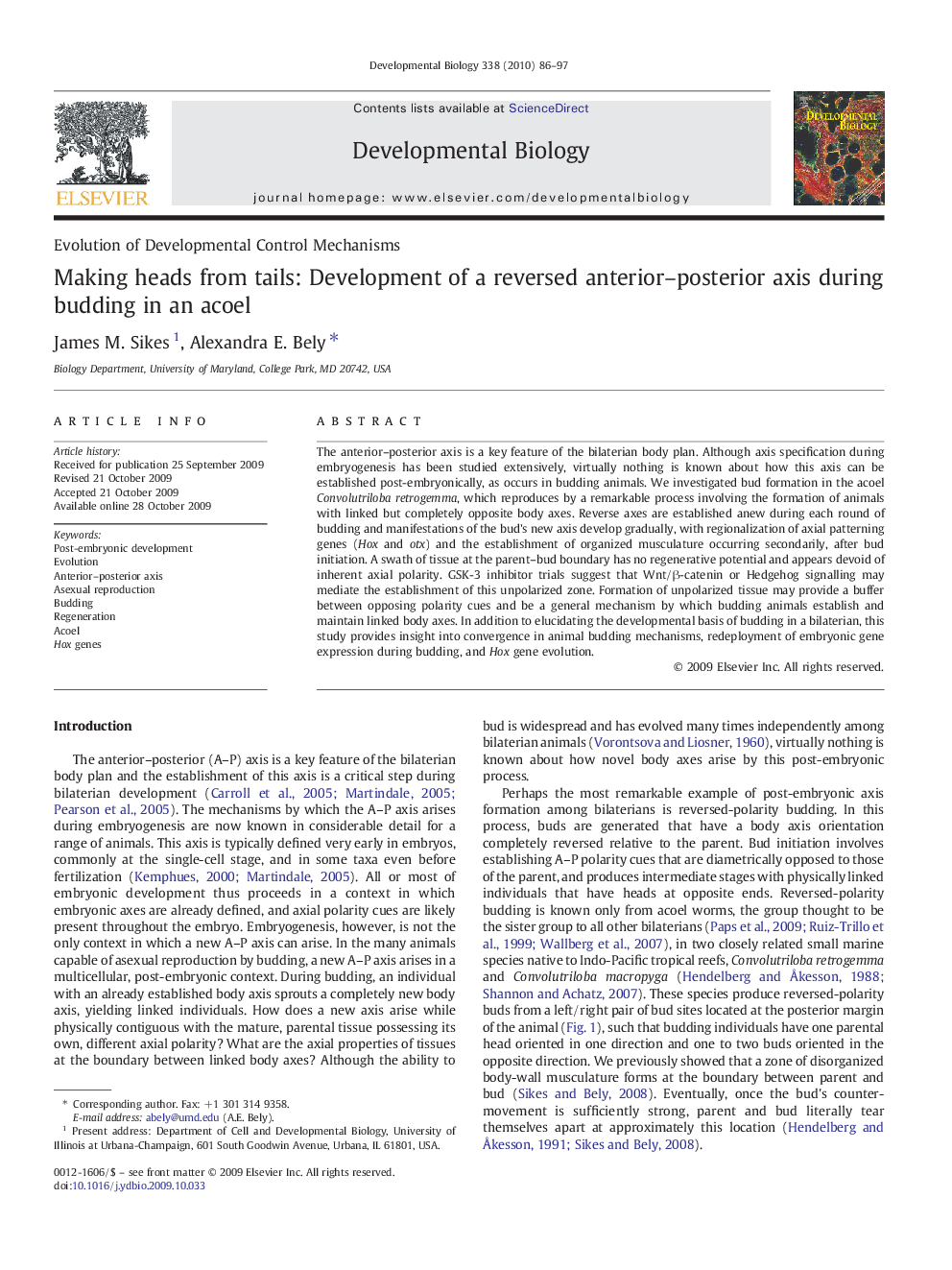| کد مقاله | کد نشریه | سال انتشار | مقاله انگلیسی | نسخه تمام متن |
|---|---|---|---|---|
| 2173986 | 1093769 | 2010 | 12 صفحه PDF | دانلود رایگان |

The anterior–posterior axis is a key feature of the bilaterian body plan. Although axis specification during embryogenesis has been studied extensively, virtually nothing is known about how this axis can be established post-embryonically, as occurs in budding animals. We investigated bud formation in the acoel Convolutriloba retrogemma, which reproduces by a remarkable process involving the formation of animals with linked but completely opposite body axes. Reverse axes are established anew during each round of budding and manifestations of the bud's new axis develop gradually, with regionalization of axial patterning genes (Hox and otx) and the establishment of organized musculature occurring secondarily, after bud initiation. A swath of tissue at the parent–bud boundary has no regenerative potential and appears devoid of inherent axial polarity. GSK-3 inhibitor trials suggest that Wnt/β-catenin or Hedgehog signalling may mediate the establishment of this unpolarized zone. Formation of unpolarized tissue may provide a buffer between opposing polarity cues and be a general mechanism by which budding animals establish and maintain linked body axes. In addition to elucidating the developmental basis of budding in a bilaterian, this study provides insight into convergence in animal budding mechanisms, redeployment of embryonic gene expression during budding, and Hox gene evolution.
Journal: Developmental Biology - Volume 338, Issue 1, 1 February 2010, Pages 86–97